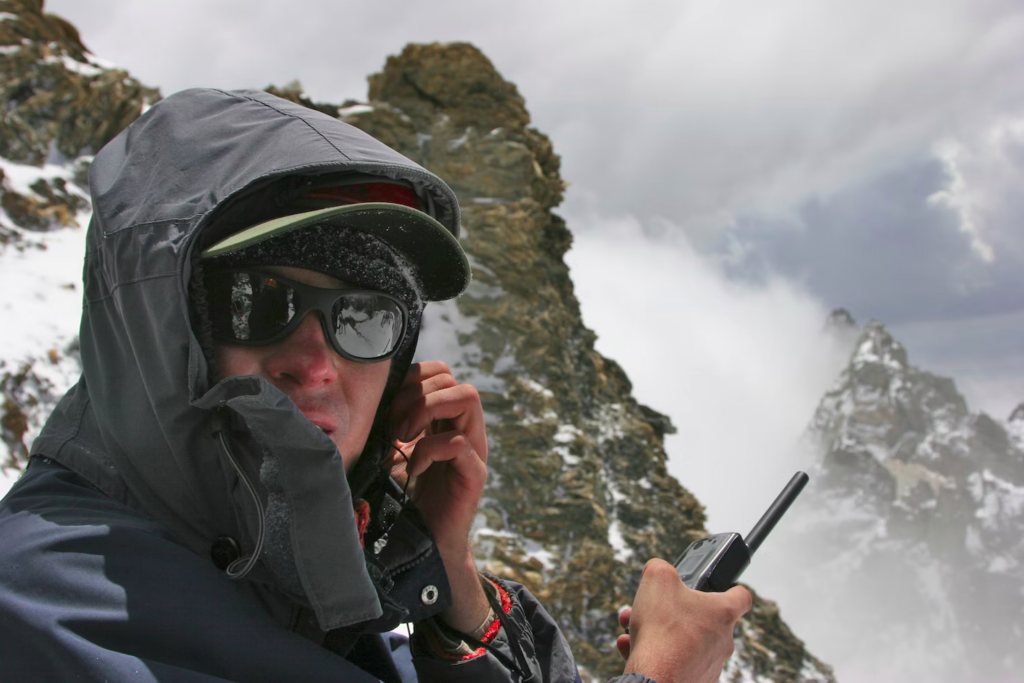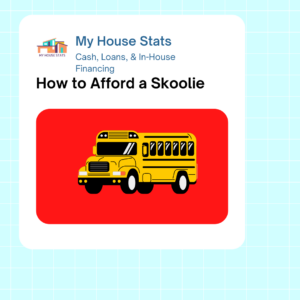Praise God because it’s that time to check out communication methods beyond cellphone towers. Let’s get into it.
With power outages becoming more common you might need to think about how to reach your family and friends if the cellphone towers are affected. Consider the following factors for finding a way to talk to your family and friends:
- if you need a license to use it
- how much distance coverage your device has
- what accessories are needed
- if it needs line of sight
- if there are service fees
- how much a unit costs
- battery life
Understanding these factors will help you choose a communication option better based on what your needs are. For example, if you don’t talk to people outside of your local town then a walkie talkie is perfect for talking to everybody in your local area.
Lets’ check out some common options.
CB Radios

You can talk on your Citizens Band (CB) radios without a license to use. It rocks a cool, affordable price between $70 and $239 US dollars. They are common near big highways and rural areas. All you need is a high quality antenna and a solar-powered charger to chat people up that are up to 155.3 miles away. This is because its power is limited by law. Some signals will skip longer because of the ionosphere.
Before buying one you must learn how active CB radio use is in your area. The free-for-all mentality among its users makes it hard to use seriously.
The types you’ll find are handheld or mobile units installed in vehicles. Mobile units installed inside vehicles are the most common. When they’re paired with a good antenna they’re suitable for most communication you’ll need. The handheld CB is a good backup option.
FRS & GRMS
Family Radio Service (FRS) & General Mobile Radio Service (GMRS) radios are sometimes confusing radios. You can expect to drop between $14 and $50 US dollars for one. Both use UHF frequencies with a maximum line-of-sight range of one mile. It transmits a maximum of half a watt. They need a fixed antenna. It has other restrictions listed when you buy a new radio.
There are no services fees or licenses needed to operate it. They can use privacy codes. They use different programmed tones to allow multiple conversations on the same channel that can be listened in to. It only breaks up a channel for multiple users. It works best as a short-range walkie talkie.
GMRS radios need a license to use in the US, but not in Canada. It has far more power and options. It’s able to transmit up to 50 watts in power. It can use repeaters and removable antennas. Its handheld range is 1.5 to 3 miles with a clear line of sight. Its repeater range is up to 30 miles with a good repeater setup. It’s useful for talking to distant groups in an isolated area. It can use FRS frequencies at FRS power output since its channels overlap with FRS radios.
If needed it’s easy to run an unlicensed station. This is not advised outside of serious emergency. It’s a great way to get decent range on a UHF radio without studying for amateur radio license. It’s handy for running a base station & repeater that covers a good bit of terrain. It doesn’t work in heavily forested terrain.
Many radios have these built in and make false claims about their potential range.

Satellite Phones
Also known as sat phones, these phones let you chat and text with folks all over the planet, including the International Space Station. As long as satellites are in space these will work, as they bounce signals off of orbiting satellites. Sat phones aren’t cheap, but you can most definitely rely on it. Be ready to drop between $300 to $2,000 for a sat phone. On top of that, there are per-minute fees and/or monthly service fees. The cheapest way in terms of service cost and equipment price is to use it as a location transmitter and for brief text messages.These phones charge with a battery, which can be charged with a solar charger even if the power grid is down.
goTenna
The goTenna attaches to your smartphone. For the price of $199 it lets you make your own short-range communication network, ranging from one to two miles or more depending on the terrain. It’s close-quarters communication for a small group. You can call or text without cellphone towers. For its cost you’re better of getting a GMRS or FRS radio.
Ham Radio
Also known as the amateur radio, this bad boy lets you communicate globally without cellphones or the Internet. You can even chat with astronauts at the International Space Station. It usually costs between $124 and $700 US dollars. It’s powered with a 12-volt DC, power bank, or solar power with the right equipment. You can do nearly anything with it, such as transmitting TV signals, short-range emergency communication, and talking to anyone anywhere on the planet.
It does need a license, with three license classes demanding studying and many accessories that need a book to understand. If you don’t mind spending time, money, and brain power to get licensed then this is a great option. You’ll end up spending several thousand or more dollars on equipment to get seriously involved.
Some ways to avoid spending so much money are:
- rational middle spots that let you have ready access to radio comms
- having a good 2-meter handheld or mobile radio, decent antenna, & knowing how to use them
Hand Crank Radio
Hand crank emergency radios are a type of radio that is small and easy to pack. Your physical power lets you charge it. They only let you listen to local radio channels in your area for info. You won’t be able to talk with these radios. Many come with charging cords to power other devices with the hand crank. Depending on which size you get it costs between $20 and $80 dollars, but can go up to $1,000.
Walkie Talkie
These don’t need service or signal. A cool cost between $25 and $500 lands you a convenient way to talk to people. It’s so easy as push-to-talk to communicate with these. Its range is around thirty miles. You can get better reception by transmitting from a higher location. You can get a solar powered charger for it.

Morse Code
Morse code is a system of dots & dashes that equal a letter or alphabet. The dots and dashes spell a word without verbal communication. You can communicate this way using anything that turns on or off, even without sound.
Fire & Smoke
Smoke and fire shows people where you are. Don’t want people knowing where you are? Time to put that fire out, fam.
A Mirror
You can use anything shiny that reflects sunlight to tell others about your location if you can’t use sound or the power grid. You can find mirrors anywhere, with some as cheap as $1.
Whistle
You can use a whistle to tell people where you are. As a matter of fact, it can cost you as little as one cent to get one if you shop for deals. Whistles can be heard up to half a mile away, and even further by animals that are with you.
Summary
What’s your go-to communication option if the cellphone towers ever get taken out? How many of these tool have you heard of? Which ones have you used? What was your favourite part of using your communication tool?
Leave your answer in the comments and be sure to share the content.
| License Required | Distance / Range | Accessories | Line of Sight | Service Fees | Price Range (USD) | |
| CB radio | No | 155.3 miles | Antenna & Solar-Powered Charger | No | No | $70 -$239 |
| FRS radio | No | 1 mile | Fixed Antenna | Yes | No | $14 – $50 |
| GMRS radio | Yes (USA) / No (Canada) | 1 mile | Fixed Antenna | Yes | No | $19 – $500 |
| Satellite phone | No | Global | NA | No | Yes | $300 – $2000 |
| goTenna | No | 1 or 2 miles | NA | No | No | $199 |
| Ham radio | Yes | Global | NA | No | No | $124 – $700 |
| Hand crank radio | No | NA | NA | No | No | $35 – $1,000 |
| Morse code | No | NA | NA | No | No | NA |
| Walkie talkie | No | 30 miles | NA | No | No | $25 – $500 |
| Fire & smoke | No | NA | NA | No | No | NA |
| Mirror | No | NA | NA | No | No | $1 – $8000 |
| Whistle | No | 0.5 miles | NA | No | No | $0.01 – $500 |


